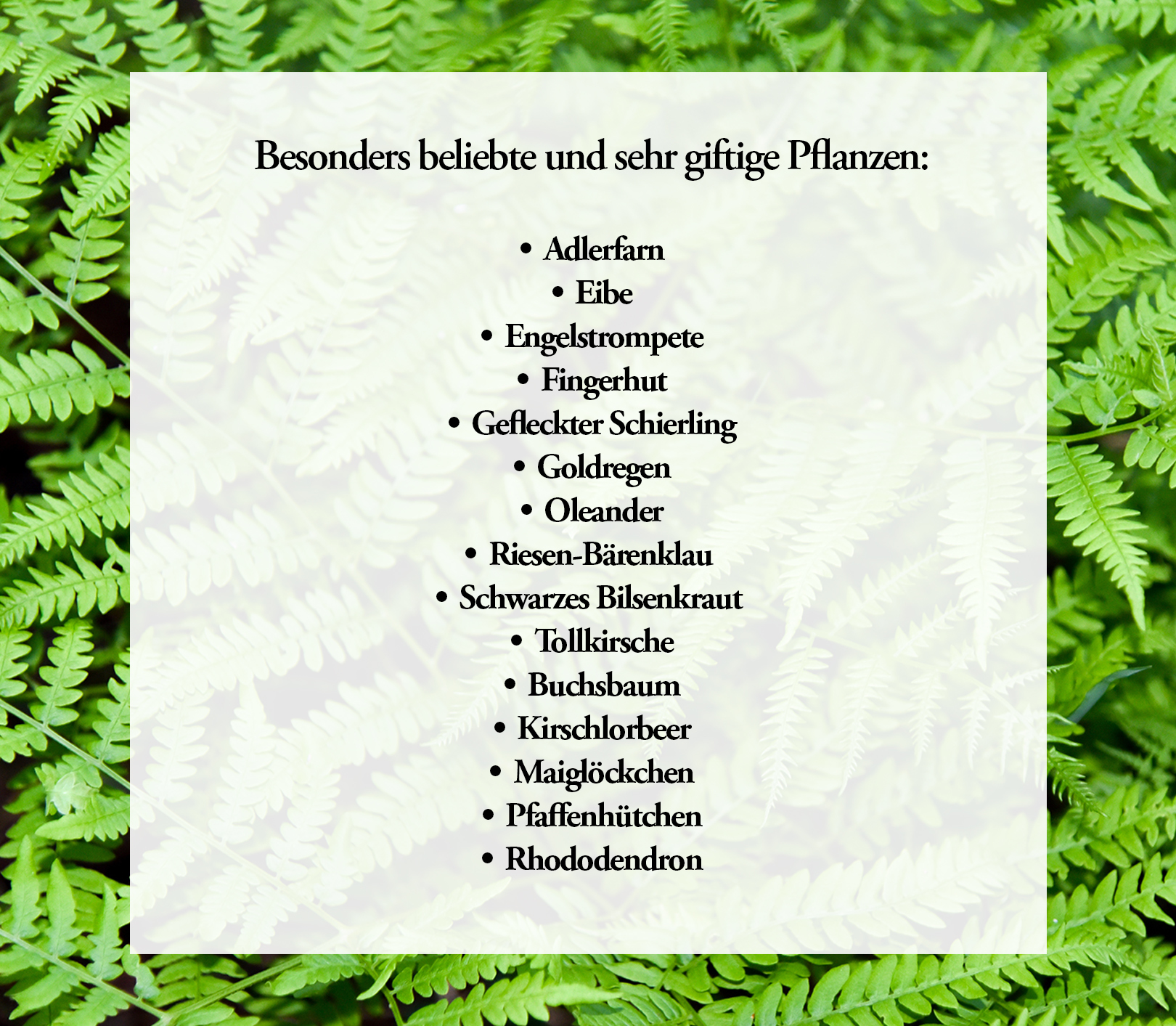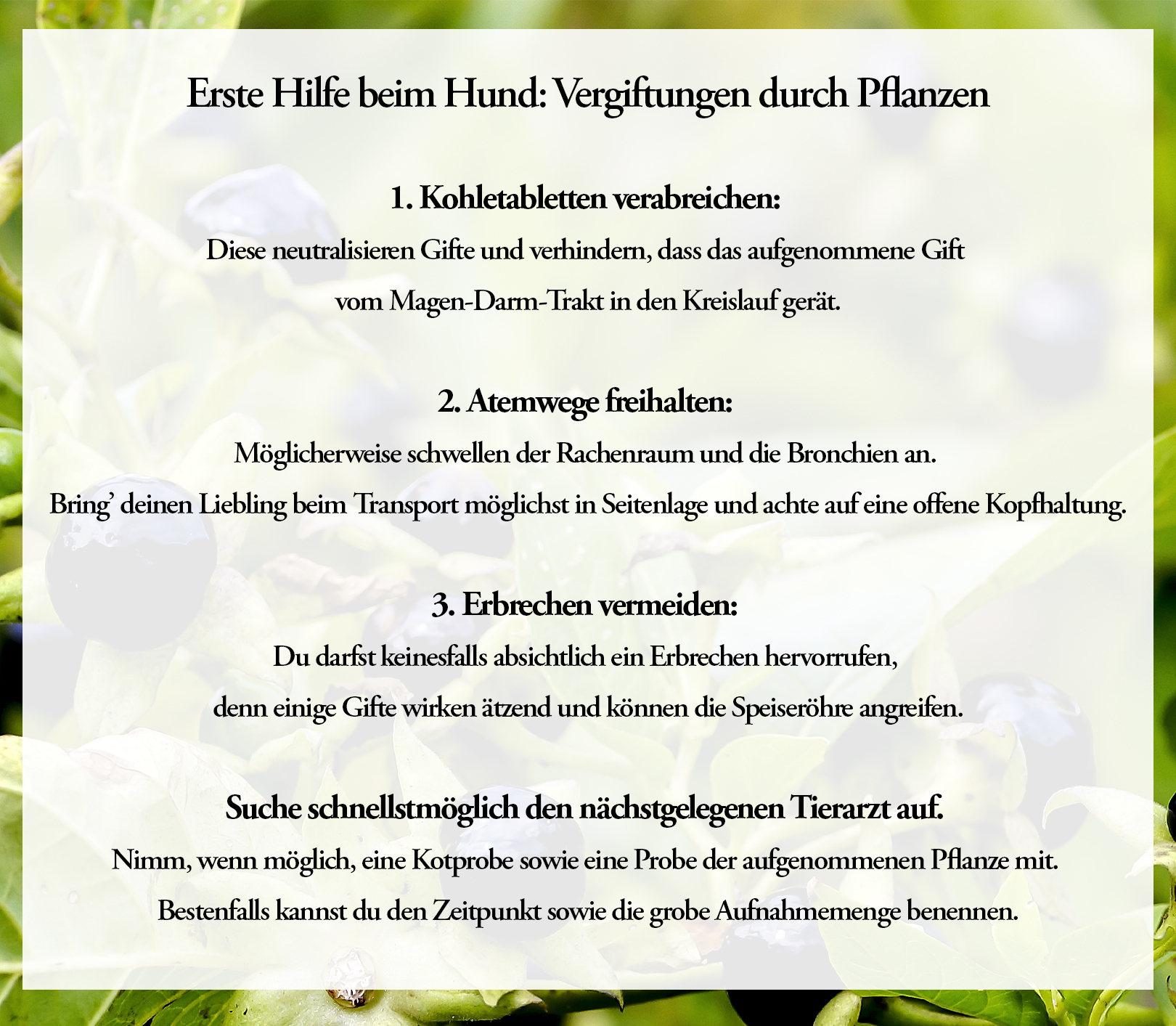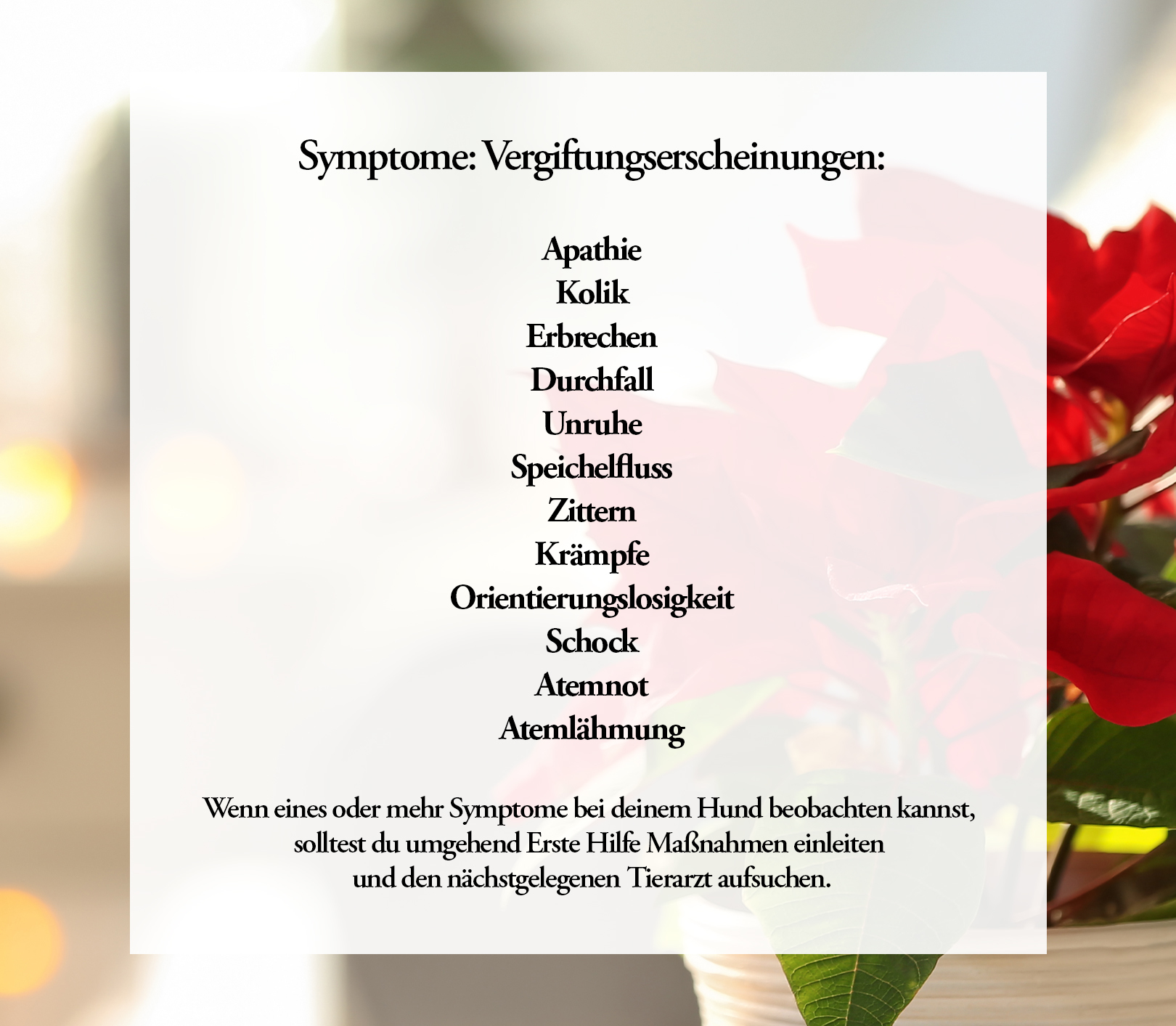Poisonous plants for dogs that you should know
A common misconception is that dogs instinctively know which plants are poisonous to them. It is true that their ancestor, the wolf, has exactly this instinct, whereas our four-legged friends, however, have lost it through breeding and permanent keeping in the yard or in the home.
Whether in the house, garden, neighbourhood or the great outdoors: not only when your four-legged friend nibbles on flowers, leaves and branches, he may ingest plant poison. Depending on the type of poisonous plant, your pet can also swallow harmful plant parts, inhale them or get a painful rash from mere physical contact.
Poisonous plants are actually much more common in nature than many people think. In our article you will therefore find those that are particularly common in Germany's households and gardens and grow in native natural areas.
Poisonous plants in the garden and in the wild nature
Especially in spring and summer, the warm and long days lure you into the garden or invite you to go for long walks. This is the time when plants develop their buds and open flowers. Many of our native plants have poisons in their fruits, milky sap, roots or are poisonous in their entirety and are therefore partly more and partly less threatening to our four-legged friends. So that you are prepared for your next excursion into nature, our short lists of the most poisonous plants for dogs (sorted by toxicity) show you which plants you should steer clear of.
Highly toxic plants for dogs
Even skin contact with these 10 plants or ingestion of small amounts may cause allergic shock and respiratory paralysis with fatal consequences within a few minutes, in addition to serious symptoms such as skin burns and diarrhoea with blood inclusions:- Henbane
- Boxwood
- Yew
- Monkshood
- Foxglove
- Spotted hemlock
- Lily of the valley
- Spindle tree
- Holly
- Belladonna
If your pet comes into contact with one of these poisonous plants and starts to show behavioural changes or signs of illness, be sure to consult a vet.
Very poisonous plants for your dog (H3)
If your four-legged friend ingests the following poisonous plants, this can cause a variety of serious symptoms such as vomiting or shortness of breath. If he even swallows large amounts in an unfortunate case, this can lead to death in the worst case without treatment:- Bracken
- Arum
- Laburnum
- Hyacinth
- Cherry laurel
- Oleander
- Daffodils
- Rhododendron
If your pet has ingested only a small amount of the plant parts or merely chewed on them without swallowing them, observe his behaviour and physical changes, such as:
- Is he breathing frantically?
- Is he restless or apathetic?
- Are his mucous membranes dry and pale?
If one or more of the above symptoms apply, you should go to your nearest vet immediately.
Poisonous plants for your four-legged friend
If your furry friend swallows individual components of these plants, such as the root of the bulb flowers, this will result in symptoms of poisoning, but these are usually mild in healthy dogs and are generally easy to treat:- Blue star
- Ivy
- Angel's trumpet
- Lilac
- Wisteria
- Elderberry
- Hydrangea
- Crocus
- Narcissus
- Primrose
- Giant hogweed
- Tulip
Again, we recommend that you keep a close eye on your pet. Immunocompromised and pre-diseased animals need veterinary treatment in such cases. If you are unsure about your healthy pet, a visit to the vet is of course always the right decision!
Our tip: If you don't want to miss out on the variety and beauty of garden plants, fence in your bed or only plant beds on the parts of the property that your dog cannot reach.
Houseplants: Scene of the crime: windowsill
It is not only the garden at home that may pose a risk to the well-being of your four-legged friend. These popular houseplants also contain substances that can cause health problems and possibly cause severe symptoms of poisoning in your pet:
- Philodendron
- Dieffenbachia
- Anthurium
- Croton
- Christ thorn
- Room fern
- Azalea
- Cyclamen
- Elephant tree
- Rubber tree and other Ficus species
- Lilies of all kinds
- Window leaf
- Dragon tree
- Bow hemp
- Poinsettia
Our tip: It is best not to use these houseplants to decorate your home. If you can't find a nice alternative and still want to use a poisonous plant, place it - adapted to the size of your four-legged friend - in inaccessible places.
Symptoms: Recognising poisoning by plants
Your four-legged friend has nibbled contentedly on a shrub or eaten grass on a walk in an overgrown meadow? Your pet has not necessarily ingested plant poison. In most cases he will get off with a black eye. The following symptoms will tell you if your pet has ingested poisonous plants and what the poisonous substances might be
- Apathy
- Colic
- Vomiting
- Diarrhoea
- Restlessness
- Salivation
- Trembling
- Cramps
- Disorientation
- Shock
- Shortness of breath
- Respiratory paralysis
Hydrogen cyanide mostly affects breathing and can lead to respiratory arrest. Central nervous toxins, mostly from the group of alkaloids, disrupt the central nervous system and in the worst case lead to cardiac arrest. These substances are often found in plants whose poison already affects the body through skin contact and causes pustules, hives or burns. Other poisons such as lectin irritate the digestive organs and cause diarrhoea, vomiting or indisposition.
First aid for dogs: How to act correctly in case of poisoning
If you notice severe symptoms of poisoning in your pet, you need to act quickly.
- Give charcoal tablets: These neutralise toxins and prevent the ingested poison from passing from the gastrointestinal tract into the circulation.
- Keep the airways clear: The throat and bronchial tubes may swell. If possible, place your pet on its side during transport and make sure that its head is open.
Avoid vomiting: Do not intentionally induce vomiting, as some toxins are corrosive and can affect the oesophagus.
The next thing to do is to go to the nearest vet as soon as possible. If possible, take a faecal sample and a sample of the ingested plant with you. At best, you can name the time and the approximate amount of ingestion.
Conclusion: Knowing about the highly poisonous and therefore most dangerous plant species can be vital in an emergency. But even if you now know what dangers plants can pose in the garden at home, on surrounding properties or on meadows and fields and lurk in wait for your pet: Don't worry too much! Enjoy your walks and always keep an eye on your pet. If he nibbles on grasses and bushes, you now know how to react immediately.



